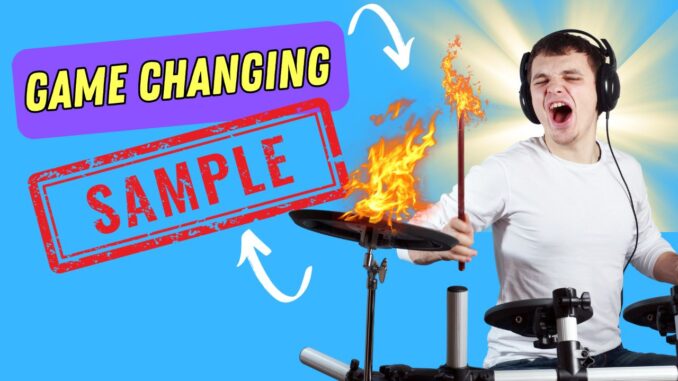
In the vast and ever-evolving landscape of music production, some sounds have become more than just musical notes; they’ve become cultural touchstones. Among these is the “Amen break,” a six-second drum sample that has profoundly shaped the music industry. In this blog post, we’ll explore the history and influence of the Amen break and how it forever changed the music industry.
The Amen Break: A Brief History
The Amen break originates from the 1969 track “Amen, Brother” by The Winstons, a relatively obscure soul and funk band. However, it wasn’t until the late 1980s that this particular drum break began to make its mark. The Amen break is characterized by its rapid-fire drum pattern featuring a distinctive snare drum roll followed by a crash cymbal hit. This brief but intense rhythmic burst soon found its way into the emerging genre of electronic dance music, specifically jungle and drum and bass.
Birth of Jungle and Drum and Bass
In the late 1980s and early 1990s, underground electronic music was undergoing a revolution. Jungle music, a genre rooted in breakbeat rhythms, was on the rise in the UK. Producers and DJs started experimenting with sampling, and the Amen break became a favorite source of inspiration. Tracks like “Original Nuttah” by Shy FX and “Valley of the Shadows” by Origin Unknown showcased the Amen break’s frenetic energy, helping define the genre.
Pioneering the Hip-Hop Sound
Beyond the realm of electronic music, the Amen break made its presence felt in hip-hop. Producers like N.W.A’s Dr. Dre and Public Enemy’s The Bomb Squad recognized its potential for adding intensity to their tracks. The break’s relentless beat lent itself perfectly to the aggressive, rebellious sound that was emerging in the genre.
The Rise of Sampling Culture
The Amen break played a significant role in the development of sampling culture. Its widespread use by countless artists led to a unique interplay between old and new music. Sampling became a way to pay homage to musical ancestors while creating something fresh and innovative. This trend continues today, with producers and artists across various genres still drawing inspiration from this iconic break.
Legal and Ethical Issues
The Amen break’s popularity also raised legal and ethical questions about sampling and copyright. In 1996, The Winstons’ drummer, Gregory Coleman, filed a lawsuit for unpaid royalties, highlighting the complex issues surrounding the use of samples. This case, though eventually settled, underscored the need for clearer regulations in the music industry regarding sampling.
The Amen break is a testament to the power of a single sample to transform the entire music industry. Its influence can be heard in countless tracks across genres, and its impact on electronic music, hip-hop, and sampling culture is immeasurable. The six seconds of drumming from “Amen, Brother” by The Winstons have resonated through time, inspiring generations of musicians and challenging the boundaries of creativity. The Amen break serves as a reminder that music is a constantly evolving art form, with innovation often stemming from the most unexpected sources.

